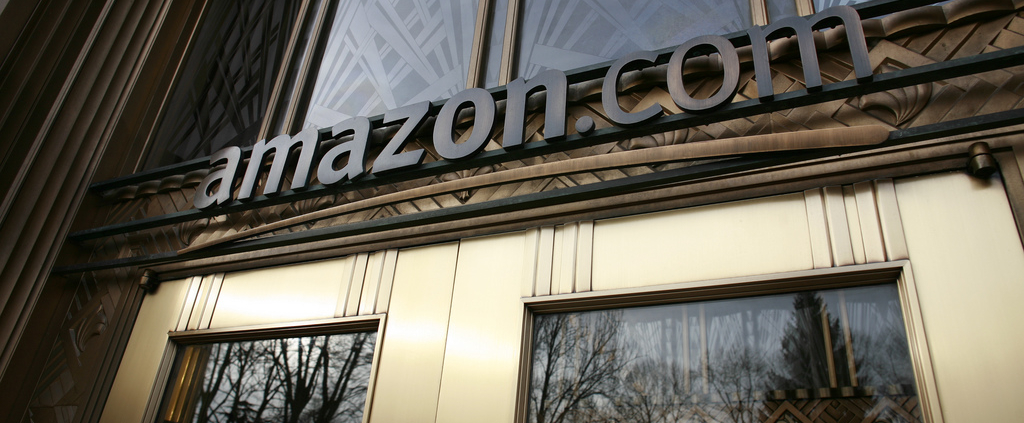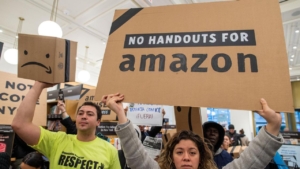What Makes Cities Attractive Places for Business in the 21st Century?
Here’s What You Need To Know
Last week, Amazon announced 20 finalists from 238 cities that submitted bids for its “HQ2,” leaving cities left off the list to do some serious soul-searching in the wake of its decision. The public competition, which has been ripe for parody, has mostly been noted for civic leaders scrambling to make their cities sufficiently attractive, often by attempting to outbid each other on tax incentives, to lure the e-commerce giant, and the 50,000 high-paying jobs and five billion dollars’ worth of investment, that it brings.
But is a big tax incentive package really all it takes to get HQ2, or to attract other innovative companies for that matter? Amazon’s original request for proposal (RFP)highlights the main factors driving its process, and although tax incentives are one part of this, other factors point to broader public policies that make for a better economic environment for all businesses, not to mention help cities improve the quality of life for all of their citizens. As cities consider what makes them attractive investment targets in the 21st century, here’s a sampling of those policies:
- A Stable And Business-Friendly Tax Structure: While the bidding war to provide greater tax and other incentives to Amazon has been the focus of scrutiny and criticized across the ideological spectrum, recent actions suggest that the desire for a stable, business-friendly environment and tax structure is shared by many businesses. After tax reform was signed into law, Apple announced an investment of $350 billion in the U.S. economy over the next five years, creating more than 20,000 jobs, and paid $38 billion in taxes on money it was previously holding overseas. Additionally, a business-friendly tax structure benefits employees, with over 125 U.S. employers announcing cash bonuses and pay increases after the corporate tax rate went to 21% from 35%. Rather than punish business, like the lawmakers in the California State Assembly who have already introduced a bill to force large companies to give half of their expected savings due to the tax law over to the state, facts suggest that a stable and business-friendly tax structure can enable economic growth, jobs, and wealth – without wasting money, time, and effort on incentives.
- Affordable Housing: The price of housing, and the cost-of-living more broadly, impacts a company’s ability to recruit talent and the salary it pays them. HQ2 is predicted to drive up rents in whatever city is ultimately chosen, so major metro areas with large housing markets may be impacted less than smaller ones. Housing policy is also intertwined with congestion and gentrification, which resulted from Amazon’s growth in Seattle and helped contribute to its decision to find another location for further expansion. Therefore, cities looking to create or maintain more affordable housing may look to Houston for some inspiration, whose relaxed zoning policy has helped it remain an affordable place to live in spite of its growth.
- A Culture Of Entrepreneurship: In a recent Forbes article, the Mercatus Center’s Adam Millsap examined Dayton, Ohio’s past as an innovative and successful city during the first half of the 20th century. To help spur that vibrancy in this century, Millsap proposes implementing policies that enable local entrepreneurs to “plant a thousand seeds,” rather than have the city hinge “its economic hopes on large, footloose companies.” One way to do this is to remove regulation and red tape – in the form of local ordinances that make it difficult for small businesses to open or expand – as a means of generating employment growth.
- “Permissionless Innovation”: Mercatus’ Millsap also proposes an attitude change on the part of the city’s leadership towards a policy of “permissionless innovation.” Instead of a regulatory environment that operates on a “precautionary principle,” which insists that new innovations fit within the existing regulatory framework, “permissionless innovation” would allow for experimentation that could lead to new technologies and business models by default due to this light-touch approach.
Only one city will be the home of HQ2, but that does not mean others need to miss out on jobs, improved quality of life, and vibrant economic growth. With the right policy approach, a city can not only attract the next Amazon, but more importantly, enable its creation.
Subscribe to Receive Insights
"*" indicates required fields
News You Can Use
ALASKA ROLLS DEEP
While some may think of big, blue states with high populations like California or New York as having the most state legislative staff per capita, the state with the most is actually Alaska – and it’s not even close. Alaska has almost seven staffers for every 10,000 residents, and Hawaii, the number two state, has only four staffers for every 10,000 residents.
Put in another context, Alaska has roughly the same amount of state legislative staffers as Ohio does, but the latter has more than 12 times the population of the former. Fiscal constraints may require Alaskan lawmakers to revisit the staffing levels, but historical data from the National Conference of State Legislatures makes one thing abundantly clear: Alaska rolls deep.
PEOPLE OVER(EXAGGERATE) PROFITS
Public scrutiny of companies is high, and business leaders are seeking to respond to this scrutiny by not only delivering financial performance, but a positive contribution to society. However, this public scrutiny may be based on a faulty assumption.
The general public thinks that the average company makes a 36% profit margin, which is actually five times higher than the median industry profit margin of six percent. This common misconception is used by politicians on the left as justification for promoting policies to force companies to pay more taxes, raise wages, and increase benefits, but if the public had a better understanding of the facts, they may be less inclined to support politicians whose policies treat job-creators like limitless ATMs.
37 FLAVORS OF REGULATORY RELIEF
The Trump Administration’s first year is viewed in some quarters as having had limited success, or having been an outright “failure.” Missing from these evaluations is the significant work the Administration has done to roll back the regulatory burden of the administrative state.
The Wall Street Journal compiled 37 major changes already made, proposed, or underway that will impact the way the federal bureaucracy regulates American businesses for years into the future. These policies may not garner much attention, but should the Administration continue to build off of this list into 2018 and beyond, the resulting economy, viewed favorably by Americans, could make Republicans more formidable in upcoming elections than currently perceived.
INSIGHTS TAKE EFFORT
After starting on the education beat for the Arizona Daily Star, reporter Hank Stephenson heard almost immediately about the longtime rumor of a blacklist used to retaliate against employees of the Tucson Unified School District. At first, he thought the list couldn’t exist, as another reporter would have “flushed it out long ago,” but an innocuous-looking agenda item at the end of a long and tedious school board agenda drove him to attend the meeting.
Three hours into the meeting, after other journalists left, he came across a clue that ultimately led to his making a public records request that showed more than 1,400 names of employees blacklisted over two decades, and resulted in his writing a featured article. Although he attributes getting his piece due to his “ability to sit through tiresome public meetings,” it demonstrates some of the values the team at Delve takes seriously: dig deeper, because details matter.



